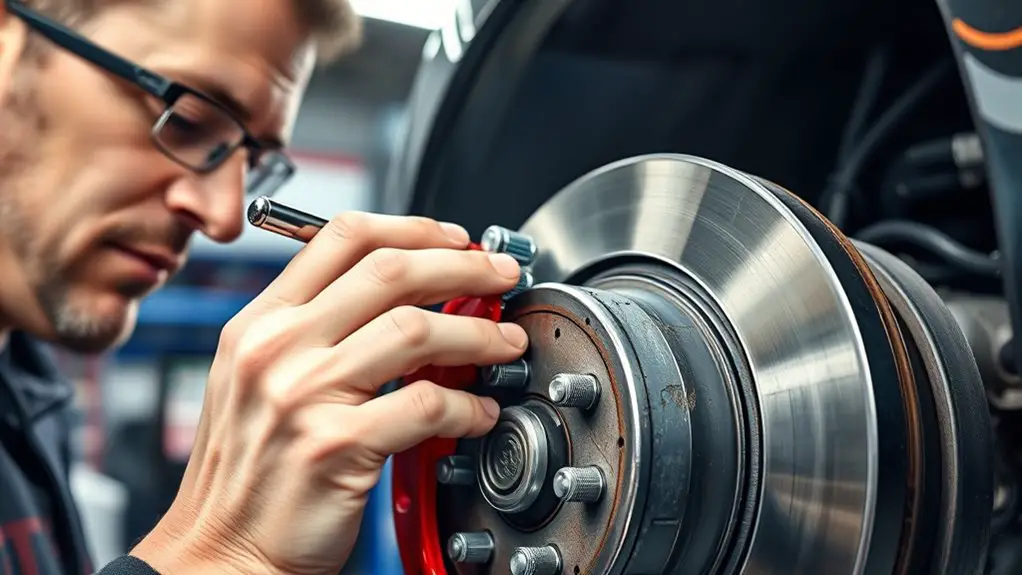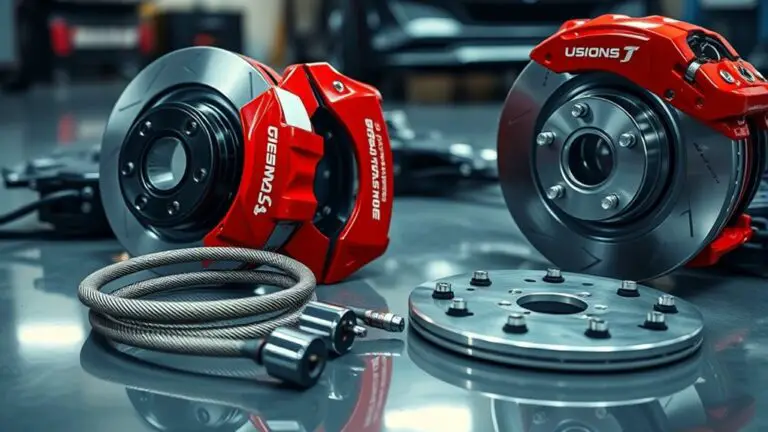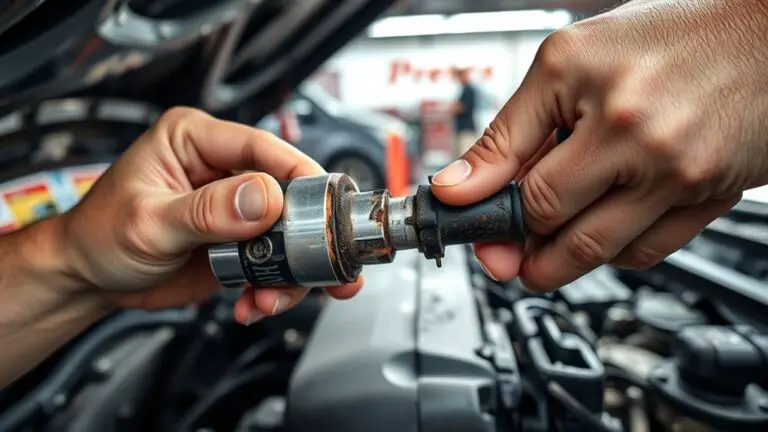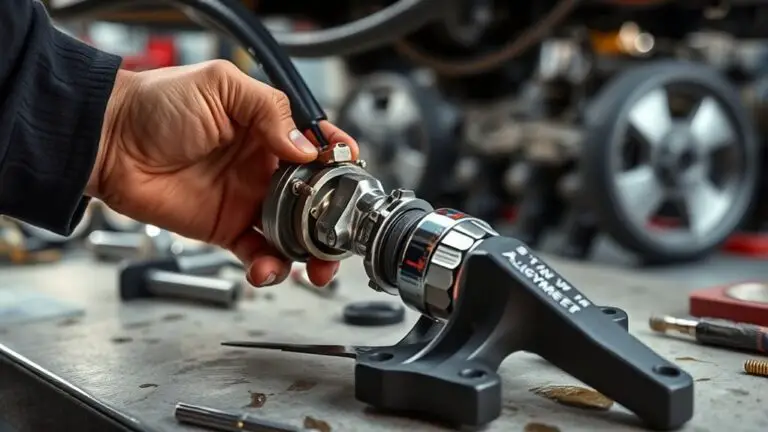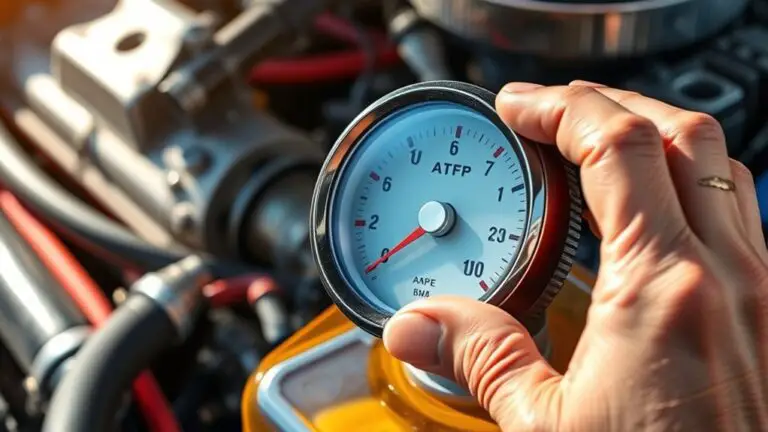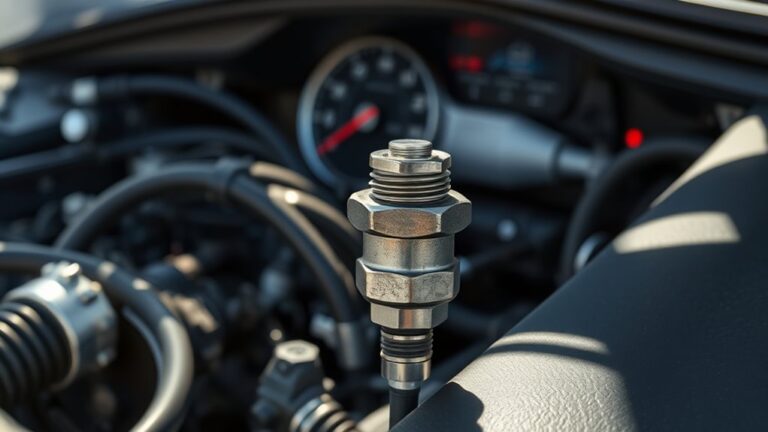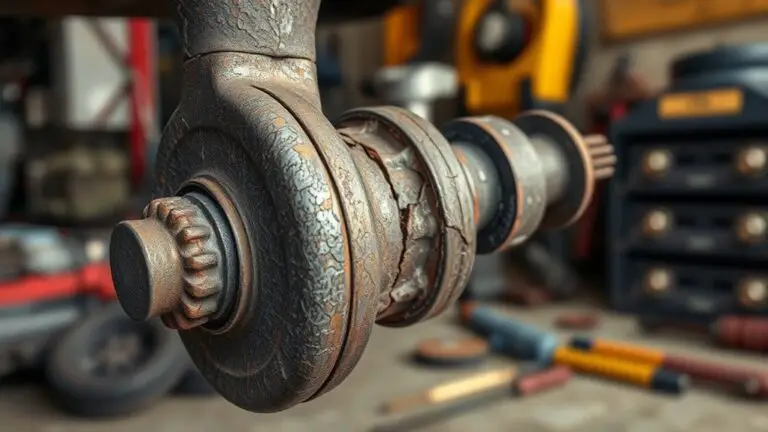Top Causes of Brake Pull to One Side and How Mechanics Fix Them
Brake pull to one side is often caused by uneven brake pad wear, misaligned suspension components, tire issues, contaminated brake fluid, or faulty brake calipers. Mechanics typically address these problems by inspecting and realigning brake components, replacing worn pads, repairing or replacing calipers, bleeding brake lines to remove air, and checking tire pressure. Regular maintenance can prevent these issues, ensuring peak performance and safety on the road. There’s more to uncover about effective prevention and solutions.
Uneven Brake Pad Wear
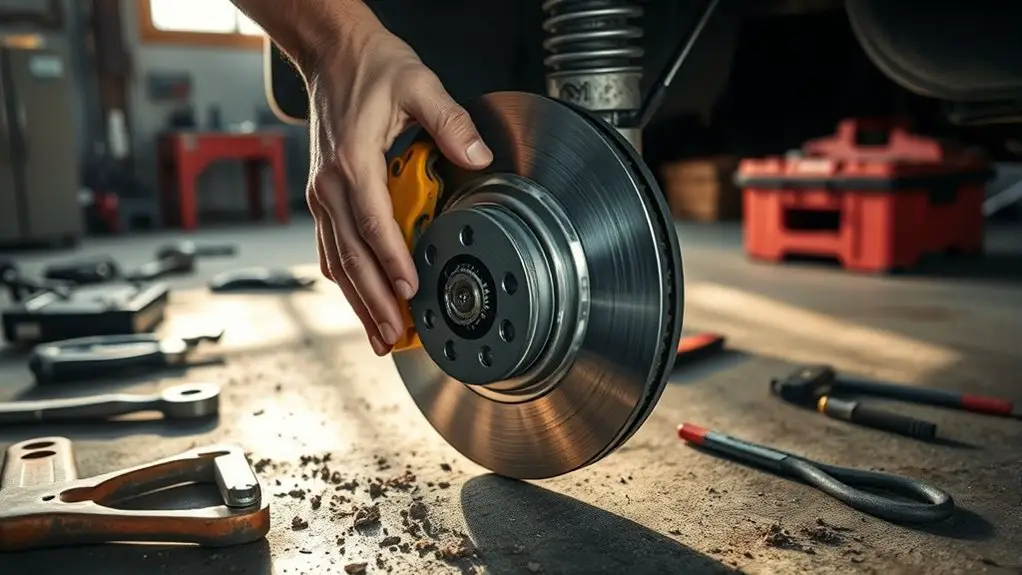
Uneven brake pad wear can greatly impact your vehicle’s braking performance, leading to a noticeable pull to one side during braking. This occurs when one side of your brake pads wears down faster than the other, often due to a lack of proper brake pad maintenance or issues with caliper function. You’ll want to regularly inspect your brake pads for signs of replacement, such as uneven thickness or visible damage.
Ignoring these signs can compromise your safety and freedom on the road. To guarantee peak braking performance, replace worn pads promptly and check for any underlying issues, like sticking calipers or contaminated brake fluid. Regular inspections and timely replacements not only enhance your vehicle’s handling but also extend the life of your braking system, giving you the confidence to embrace the open road. Remember, staying proactive about brake pad wear means enjoying a safer, smoother ride.
Misaligned Suspension Components
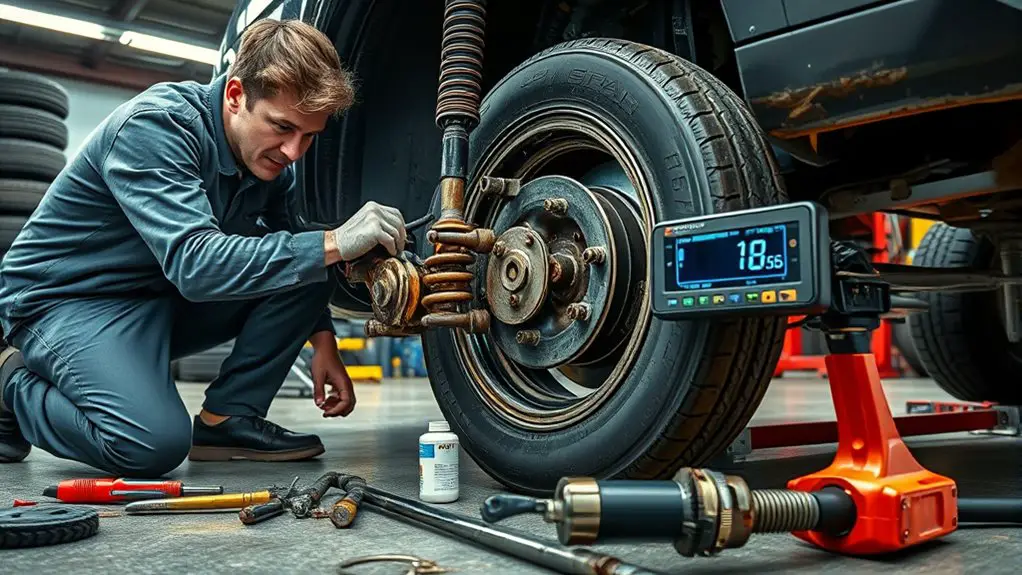
If your vehicle pulls to one side during braking, it might be due to misaligned suspension components. Suspension alignment is essential for maintaining even tire contact with the road and ensuring consistent braking performance. When suspension components, such as control arms, tie rods, or bushings, are misaligned, they can create uneven forces that lead to brake pull.
A misaligned suspension can cause one wheel to engage more forcefully than the other, resulting in a drift to one side when brakes are applied. Mechanics typically start by inspecting the suspension components for wear and damage, followed by a detailed alignment check using precision tools. Adjustments are made to restore proper angles, ensuring ideal tire alignment and performance. By addressing these misalignments, you can enhance safety and regain the freedom of a balanced, responsive driving experience.
Tire Issues
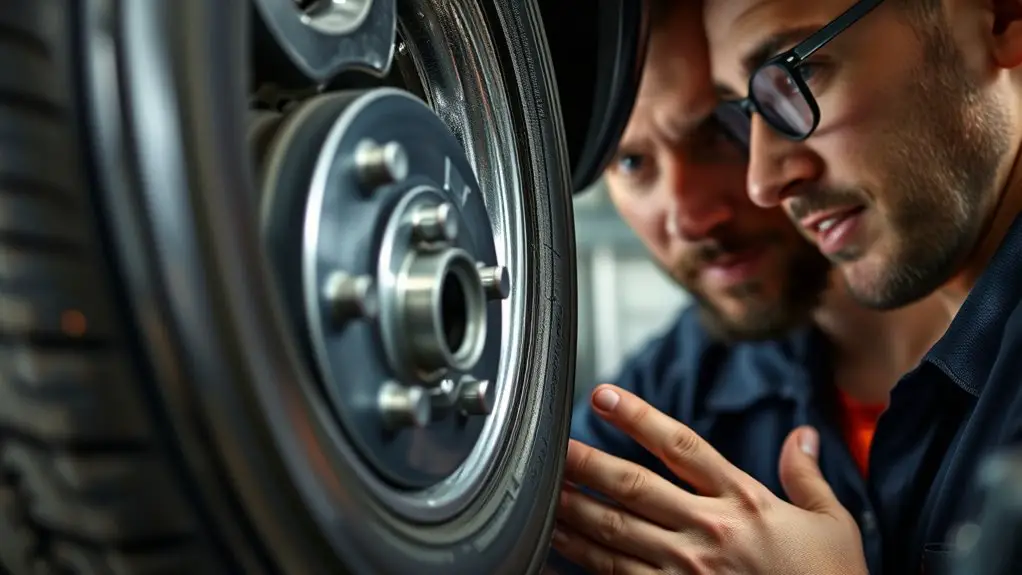
Tire issues can greatly contribute to brake pull, so it’s essential to address them. Uneven tire pressure, worn tread, and misaligned tires can all lead to inconsistent braking performance. Regularly inspecting these factors is vital for maintaining ideal handling and safety.
Uneven Tire Pressure
Maintaining proper tire pressure is essential for vehicle stability and safety. Uneven tire pressure can lead to brake pull, causing your vehicle to veer to one side. This imbalance affects handling and can increase stopping distance, compromising your safety on the road. Regularly checking and adjusting tire pressure can prevent these issues.
| Tire Condition | Effect on Brake Pull |
|---|---|
| Under-inflated tire | Pulls to opposite side |
| Over-inflated tire | Pulls to inflated side |
| Equal pressure | Balanced braking |
| Uneven wear | Compromised stability |
| Proper maintenance | Peak performance |
Worn Tire Tread
While you might not immediately notice the effects of worn tire tread, its impact on brake performance can be significant. Insufficient tread depth can lead to uneven contact with the road, causing one side of your vehicle to brake more effectively than the other. This imbalance results in a noticeable pull when you apply the brakes. Regular tire rotation can help distribute wear more evenly, maintaining optimal tread depth across all tires. If you find your tread is excessively worn, it’s essential to replace the tires to restore proper handling and braking. Monitoring tread wear not only enhances braking efficiency but also guarantees your freedom on the road is safe and reliable. Don’t underestimate the importance of proper tire maintenance!
Misaligned Tires
When your vehicle’s wheels are misaligned, it can lead to uneven brake performance, causing a noticeable pull to one side during braking. This misalignment affects how force is distributed across your tires, resulting in inconsistent contact with the road. To address this, you’ll need a professional tire alignment, which realigns your wheels to the manufacturer’s specifications. Additionally, wheel balancing guarantees that the weight of your tires and wheels is evenly distributed, reducing vibrations and improving handling. If you ignore these issues, you not only risk your safety but also accelerate tire wear. Regular checks on alignment and balancing can enhance your driving experience, giving you the freedom to navigate the roads confidently.
Brake Fluid Contamination
Although brake fluid is essential for the proper functioning of your vehicle’s braking system, contamination can considerably compromise its effectiveness. Contaminated brake fluid, often due to moisture, dirt, or metallic particles, can lead to brake pull. This happens because the fluid’s boiling point decreases, causing vapor lock and inconsistent braking pressure across the system.
To prevent this issue, adhere to recommended brake maintenance practices and fluid replacement guidelines. Regularly inspect your brake fluid for clarity—if it appears dark or murky, it’s time for a change. Typically, replacing the fluid every two years or as specified in your vehicle’s manual is wise.
For peak performance, verify that the brake system components are clean and that no foreign substances enter the fluid reservoir during maintenance. By keeping your brake fluid uncontaminated, you’ll maintain consistent braking performance and enjoy the freedom of safe driving.
Faulty Brake Calipers
When you experience uneven braking or a vehicle that pulls to one side, faulty brake calipers may be the culprit. Identifying symptoms of caliper failure is essential for maintaining peak brake performance. In this section, we’ll outline the repair and replacement process to guarantee your braking system functions as intended.
Symptoms of Caliper Failure
Faulty brake calipers can greatly impair your vehicle’s braking performance, leading to dangerous situations on the road. Recognizing the symptoms of caliper failure is vital for ensuring your safety. Here are some signs to watch out for:
- Uneven wear on brake pads
- Vehicle pulling to one side during braking
- Excessive heat from one wheel
- Unusual noises, such as grinding or squeaking
If you notice any of these symptoms, it’s essential to schedule a caliper inspection. Hydraulic issues may also arise, further complicating your braking system. Ignoring these warning signs could lead to severe consequences, so addressing caliper failure promptly is key to maintaining your freedom on the road.
Repair and Replacement Process
If you’ve identified symptoms of caliper failure, addressing the issue promptly is vital to restoring your vehicle’s braking performance. Start by safely lifting the vehicle and removing the wheel to access the brake system. Inspect the caliper for leaks or damage. If replacement is needed, unbolt the caliper from its bracket and detach the brake line, making sure you catch any fluid. Install the new caliper, reconnect the brake line, and bleed the system to remove air. Always check the brake pads for wear and replace them if necessary. Following these maintenance tips will enhance your vehicle’s safety and performance. Finally, verify everything is reassembled correctly before testing your brakes to confirm they’re functioning at their best.
Improper Brake Installation
Improper brake installation can lead to significant safety issues, as even small misalignments may cause the vehicle to pull to one side during braking. This can stem from various errors in the brake system installation techniques. To grasp the potential pitfalls, consider these common mistakes:
- Incorrectly positioned calipers
- Uneven brake pad wear or alignment
- Faulty hardware or missing components
- Improper torque settings on bolts
When you experience brake pull, it’s essential to have your brake system inspected by a qualified mechanic. They’ll assess installation quality and check for any misalignment or component failures. Properly executed brake installation not only enhances your vehicle’s performance but also guarantees your safety on the road. By addressing these issues promptly, you reclaim your freedom to drive confidently, knowing your brakes are functioning as intended.
Frequently Asked Questions
How Can I Tell if My Brakes Need Immediate Attention?
If your brakes are screeching like a banshee or pulling you to one side, it’s time to pay attention. Check your brake fluid—low levels could mean a leak or uneven wear on your brake pads. You shouldn’t be an amateur detective when it comes to safety; those signs scream for immediate action. Don’t ignore the warning lights on your dashboard; they’re not just there for decoration. Your freedom on the road depends on it!
What Are the Signs of Brake Pad Wear?
You’ll notice signs of brake pad wear through various indicators. If you hear grinding or squeaking noises, it’s a clear brake noise indicator that your pads are thinning. Additionally, you should check the pad thickness measurements; if they’re less than 1/8 inch, it’s time for a replacement. Keep an eye on vibrations or pulling during braking, as these can also signal that your pads are worn and need immediate attention.
Can Weather Conditions Affect Brake Performance?
Absolutely, weather conditions can dramatically affect brake performance. When moisture impacts your brakes, it can lead to decreased friction and increased stopping distances. Rain or snow can create a film on the brake pads, making them less effective. In extreme cases, you might feel your vehicle pulling or responding sluggishly. Always guarantee your brakes are well-maintained, especially in adverse weather, so you can enjoy the freedom of driving safely, no matter the conditions.
How Often Should I Inspect My Brake System?
You should inspect your brake system at least every 6 months or every 6,000 miles, whichever comes first. Regular brake maintenance frequency guarantees that components like pads, rotors, and fluid are in peak condition. If you notice any unusual sounds or performance issues, don’t wait for the next inspection interval; get it checked immediately. Staying proactive will keep your braking system reliable, enhancing your driving freedom and safety on the road.
Is Brake Pull More Common in Older Vehicles?
Yes, brake pull is more common in older vehicles due to wear and tear on components, which affects brake maintenance. As your vehicle ages, factors like uneven brake pad wear, corroded calipers, or failing hoses can lead to imbalances in braking force. Regular inspections are essential for identifying these issues before they escalate, ensuring your vehicle maintains ideal performance and safety. Don’t overlook the importance of proactive maintenance as your vehicle ages.

